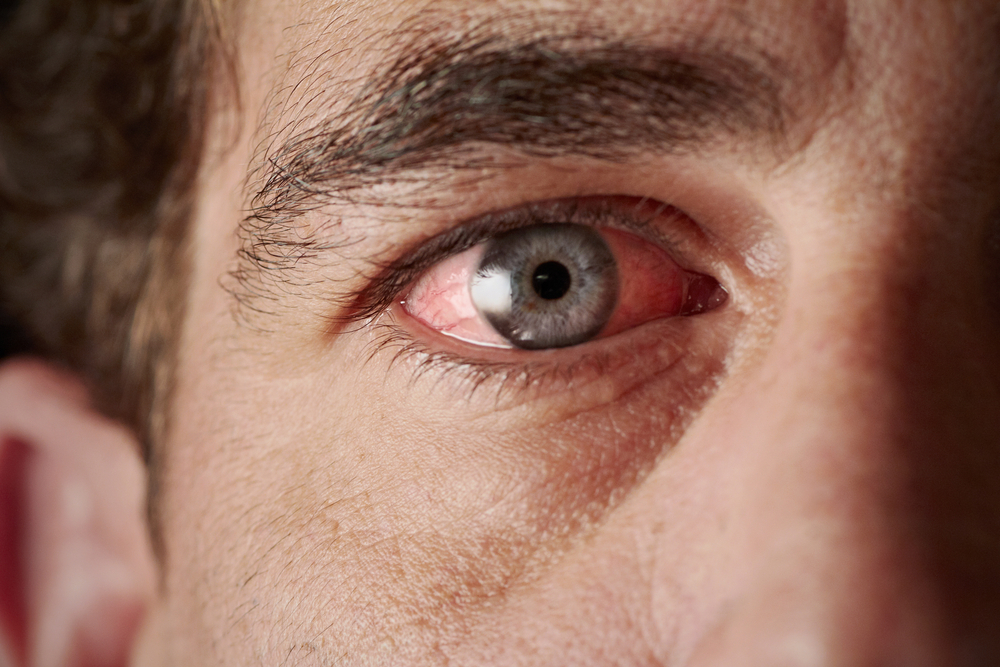Infection
Infection

Infection in the structures around the eye can range from simple Stye on the eyelid to life threatening infections in the orbit which can extend into the brain.
What is an eye infection?
Suppose you feel any discomfort in the eyes, like itchiness, burning sensation, or turning to red or pink. In that case, it is referred to as an eye infection.
An eye infection can be in the following three areas of the eye
- Eyelid
- Cornea
- Conjunctiva
Symptoms of an Eye Infection
- Red eyes
- Pain
- Eye discharge
- Watery eyes
- Dry eyes
- Light Sensitivity
- A feeling of a foreign object on or in your eye
- Swollen eyes
- Swelling around the eyes
- Itching
- Blurry vision

Types of Eye Infection (Mode of infection )
Sties— A sty is formed when there's an abnormal buildup of bacteria in the glands of your eyelids. This occurs as a pimple or zit-like growth on the lining of your eyelid. These are typically painful, feel larger than they are, and cause watery eyes. Popping a sty usually makes the problem worse.
Conjunctivitis- commonly referred to as pink eye, is the most common type of eye infection caused by bacteria or viruses. It usually happens in the inner parts of the eys. The pink eye most commonly makes your eyes swell, turn red, and excrete excessive pus and mucous. Not only is it painful and itchy, but it's highly contagious. If you suspect you have a pink eye, then avoid contact with others.
Blepharitis- exposure to common bacteria on humanmade surfaces sometimes results in this type of infection. Inflammation of the eyes leads to redness, blurry vision, itchy eyes and eyelids, and the feeling that something is always in your eyes. Leaving make-up on your eyes overnight or rubbing your eyes with dirty hands puts you at risk.
Contact Lens-Related Eye Infections-
Infection due to contact lenses can happen due to multiple reasons. Some causes of infection may include:
- sleeping in your contact lenses
- microbes build up under the lens
- not keeping lenses or cases clean
- reusing contact lens solution
How to Avoid Common Eye Infections
The most common eye infections symptoms are eye discharge, red eyes, pain, itchiness, swelling, watery eyes, and blurry vision.
The following practice can avoid these eye infections:-
- Keep your eyes clean from excess oil, bacteria, and pollen from your eyes will reduce irritation. Regularly Wash your eyes with a doctor-recommended cleanser.
- Place a warm, wet washcloth on your eyes at night before going to bed. This soothes the eyes.
- Wipe your eyes clean with a soft washcloth and diluted mixture of hypoallergenic baby shampoo and warm water.
Preventing tips
Preventing eye infections involves simple hygiene habits that reduce your chances of exposing your eyes to infectious bacteria, fungi, and viruses.
- Wash your hands before touching your eyes
- Avoid rubbing your eyes excessively.
- Do not share cosmetics with others.
- Replace cosmetics and applicators if you develop an eye infection.
- Keep your contact lenses and case clean per your eye doctor's instructions.
- Avoid wearing contacts overnight.
- Replace your contact lens case every three months.
Treatment for Eye Infection
Fortunately, most bacterial eye infections are curable with a prescription.
Dr. Sneha will prescribe you antibiotic eye drops or ointments and compresses.
Many common viral eye infections resolve on their own. In cases of severe viral eye infections, an antiviral eye drop may be prescribed. Some viral eye infections require careful administration of steroid eye drops to reduce related inflammation.
Depending on your eye infection's underlying cause, Dr. Sneha may prescribe antibiotics or antiviral medications that are taken orally.
In some cases, depending on the condition, surgery will be the last resort. These will be minor surgeries, and you can go home the same day of the surgery.
See Our Orbit Treated Patients :